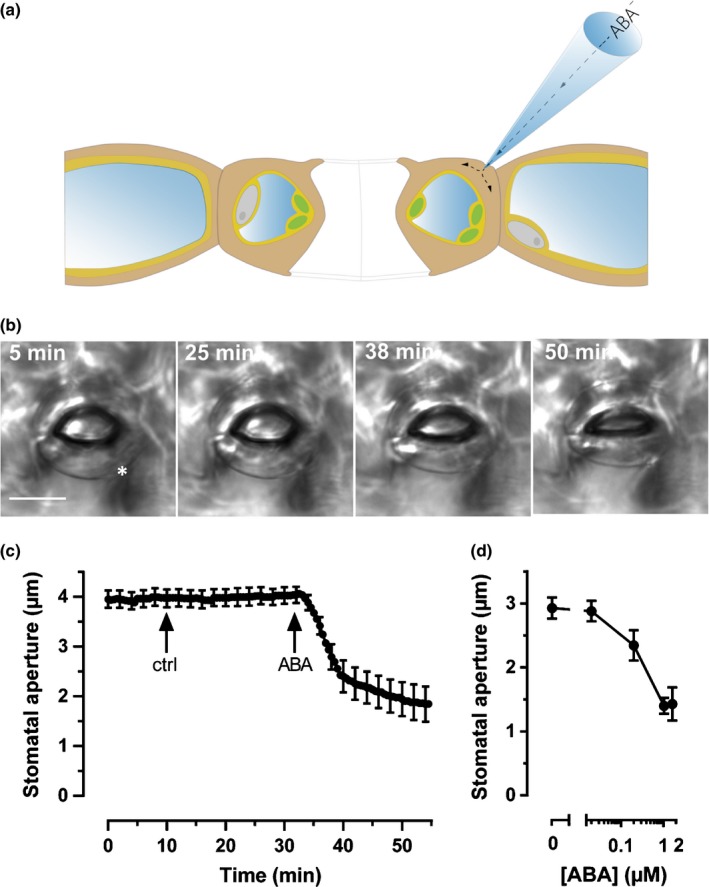Figure 1.

Current ejection of abscisic acid (ABA) induces rapid stomatal closure. (a) Cartoon of the current‐ejection technique. The tip of an electrode was filled with 50 μM ABA (or 50 μM benzoic acid as control) and brought in contact with the wall of a guard cell, in an intact Arabidopsis thaliana leaf. ABA was ejected via the microelectrode, by application of a −0.8 nA current. Stomatal movements were monitored with a charge‐coupled device camera mounted to an upright microscope. (b) Images of a stoma in an intact leaf, acquired before and after current ejection of benzoic acid, as a control (25 min), and ABA (38 and 50 min). The time points marked in the images correspond to the time axis shown in (c). The asterisk marks the position at which the microelectrode was in contact with the guard cell wall. Bar, 10 μm. Note that stomatal movement was mainly due to a change in shape of the guard cell close to the microelectrode, whereas the other guard cell remained bent. See also Supporting Information Videos S1. (c) Time‐dependent changes of the average stomatal aperture, after subsequent application of benzoic acid and ABA, as indicated by arrows. Note that current ejection of benzoic acid did not affect the stomatal aperture, whereas ABA triggered rapid stomatal closure. Average data are shown, ± SE, n = 9. (d) Dose–response curve of ABA‐induced stomatal closure. The dose of ABA was varied by modulating the hormone concentration in the current‐ejection electrode and estimated as explained in Methods S1.
